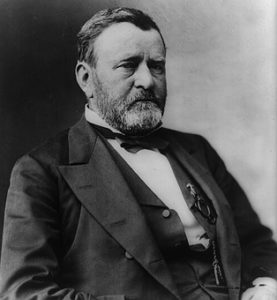Most of us have “inked in” our shopping extravaganza on the day known as Black Friday. But not everyone knows where the term really comes from. Most believe that the term “Black Friday” refers to the day after Thanksgiving being a profitable one as businesses start to sell a lot of merchandise on this day.
 This follows the old bookkeeping practice of recording profits in black and losses in red. So, businesses are finally able to put themselves in the black for the rest of the year starting that day. Admittedly, anyone who has worked in retail would definitely see the logic in this theory.
This follows the old bookkeeping practice of recording profits in black and losses in red. So, businesses are finally able to put themselves in the black for the rest of the year starting that day. Admittedly, anyone who has worked in retail would definitely see the logic in this theory.
History.com (among others) however, explains that this isn’t the whole story. The first recorded use of Black Friday had nothing to do with fighting the hordes to get to your favorite retail store at 4 a.m.
It began with two ruthless Wall Street Financiers, Jay Gould and Jim Fisk, who bought as much bullion as they could get their hands on, causing the price of gold to skyrocket. They also tried to enlist the help of President Grant’s brother-in-law, Abel Corbin. They wanted him to persuade the president to limit the availability of the metal to drive its price even higher.
When Grant found out about this conspiracy, he ordered the U.S. Treasury to sell gold instead. After unloading $4 million worth, that Friday in September saw the price of gold fall from $160 to $130 an ounce. This collapsed the gold market and caused the stock market to plummet, pretty much bankrupting everyone. The day became known in financial history as Black Friday. 
However, “Black Friday” really caught on in Philadelphia back in the 1950s, when police used the term to describe the utter chaos that happened on the day after Thanksgiving when the city was overwhelmed by shoppers, tourists, and troublemakers in advance of the Army-Navy game held on the upcoming Saturday.
The term didn’t catch on with other parts of the country until much later, but by the 1980s retailers found a way to turn the phase into something more positive for them and their customers. As in the idea of turning a profit and going from being in the red to being in the black as mentioned at the beginning of this blog. This version soon took over and has sparked the retail buying extravaganza like Small Business Saturday and Cyber Monday.
 Who knows what stories will unfold this year? It should be interesting, as a late Thanksgiving means that there are only 26 days from Black Friday through Christmas Eve. Be sure to set your alarm and happy shopping!
Who knows what stories will unfold this year? It should be interesting, as a late Thanksgiving means that there are only 26 days from Black Friday through Christmas Eve. Be sure to set your alarm and happy shopping!





